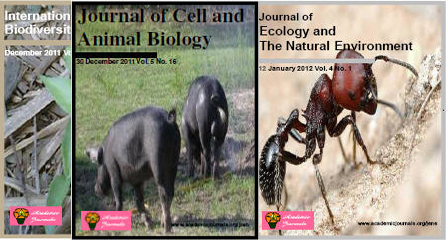 |
| Download the Journal *pdf |
In Brazil, which houses 30 percent of the remaining tropical rain forest on Earth, more than 50,000 square miles of rain forest were lost to deforestation between 2000 and 2005.
The oceans are so vast and deep that until fairly recently, it was widely assumed that no matter how much trash and chemicals humans dumped into them, the effects would be negligible.
Major China-based producers and users of palm oil have committed support for sustainable palm oil.
The volume of carbon allowances traded globally grew by almost 20 per cent last year, according to new figures that also show that falling prices meant the value of the market grew by just four per cent.
We take a look at some of the biggest mistakes made by fishkeepers – and not just newcomers to the hobby!.
 |
| Download the Journal *pdf |
 |
| Download the Journal *pdf |
The effect of waste polypropylene fibre inclusion on the mechanical behaviour of sand generated from the aggregate industry Choura .M 1,2*, Khelif .N 2, Mnif .T 2 and Menaa .L3 1National School of Engineers (ENIS), University of Sfax, Tunisia. 2Research Unit, Environmental Geotechniques and Civil Materials, ENIS, Sfax, Tunisia. 3University of Medea, Algeria. *Corresponding author. E-mail: chouramed@gmail.com. Accepted 8 November, 2011 | ||
Abstract | ||
During the last decades, the rising demand for land reclamation and the utilization of soft or unstable soils led to a great advance in the ground amelioration techniques as a major part of civil engineering around the world. Within this framework, this paper presents the results of an experimental program based mainly on direct shear tests on sand generated from aggregate industry, with and without waste polypropylene (PP) fibre reinforcement, in order to assess the effect of randomly distributed PP fibre on the stress displacement behaviour and shearing strength of this type of sand. The effects of the variation of PP fibre content (limited to 1.5% of the weight of sand) and length (0.5, 1 and 1.5 cm) are investigated. The obtained test results indicate that PP fibre reinforcement increases the maximum shear constraint and changes the sands brittle mechanical behaviour into a more ductile one. These results pave the way to an effective valorisation of such a traditionally useless kind of sand. Key words: Polypropylene fibres, fibre-reinforced sand, shearing strength, mechanical behaviour. |
C. A. Medina-Ruíz, I. A. Mercado-Luna, G. M. Soto-Zarazúa and I. Torres-Pacheco and E. Rico-García* Department of Biosystems, School of Engineering, Queretaro State University, C.U. Cerro de las Campanas, Querétaro, México. *Corresponding author. E-mail: ricog@uaq.mx or garciarico@yahoo.com.mx. Tel: (52) (442) 1921200 ext. 6016. Fax: (52) (442) 1921200. Ext: 6015. Accepted 31October, 2011 | ||
Abstract | ||
Mathematical models allow for predictions of behavior under specific handling and environmental conditions, and are particularly useful in expensive studies or in studies where long term effects may be difficult to monitor. In mathematical modeling there are two main types of models: descriptive models and mechanistic models; the first are relationships between response and predictor which are not ruled by biological processes; the latter takes into account the basic processes in plants by means of differential equations to account for the development of plants. This requires a deeper knowledge of the physiological development of plants. This work reviews mathematical modeling on tomato plant. The TOMGRO model is modular and has been widely studied and calibrated under several climatic conditions which demonstrates that it is a robust model. As a future research the TOMGRO model is proposed to be adapted to other crops. Key words: Differential equations, descriptive models, mechanistic models. |